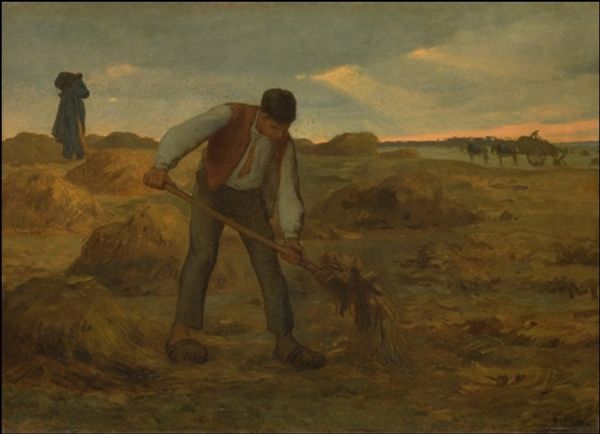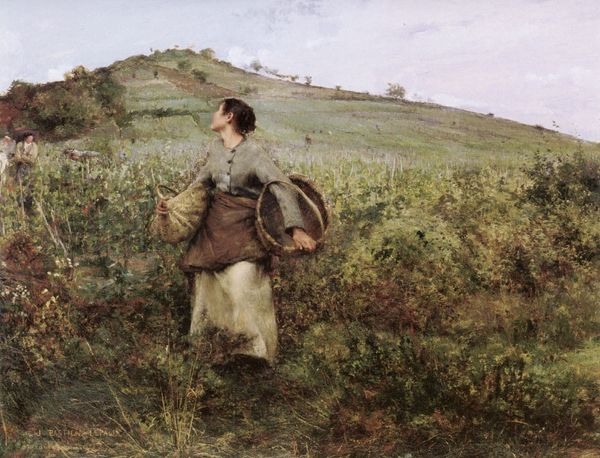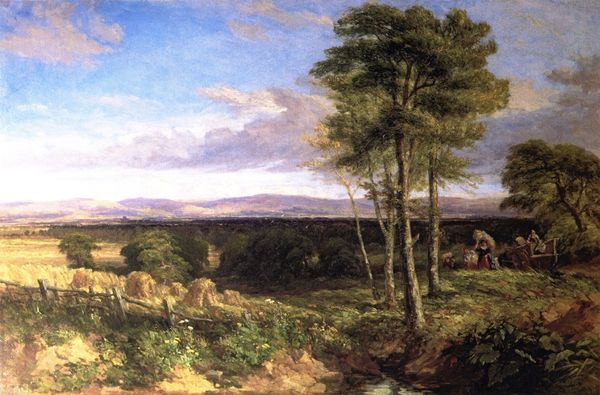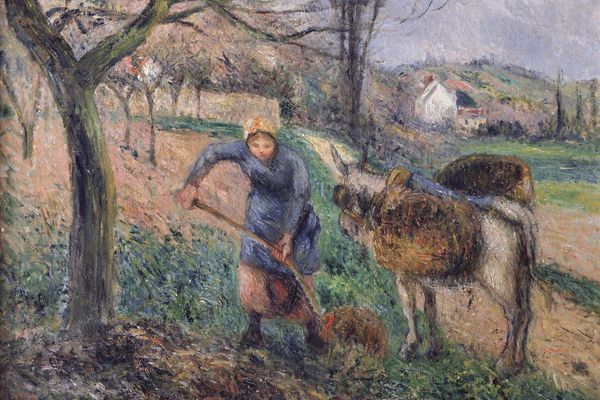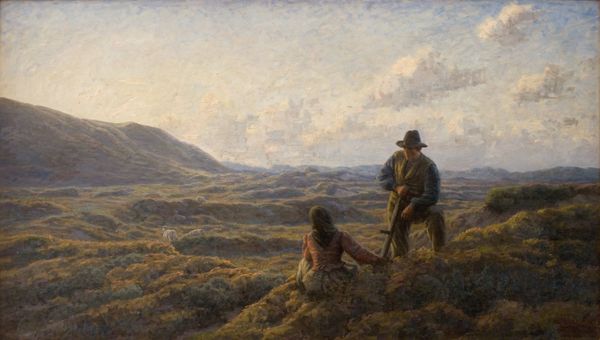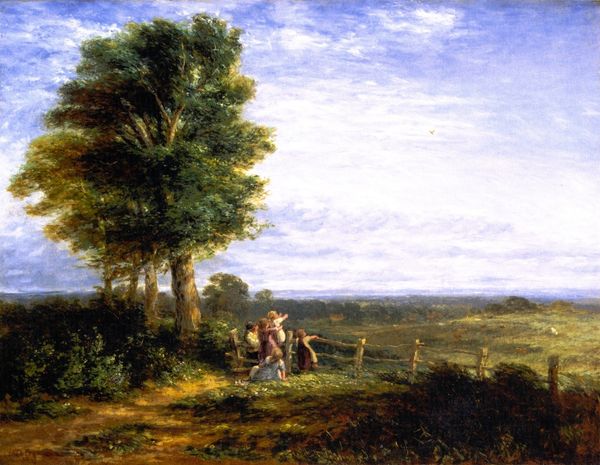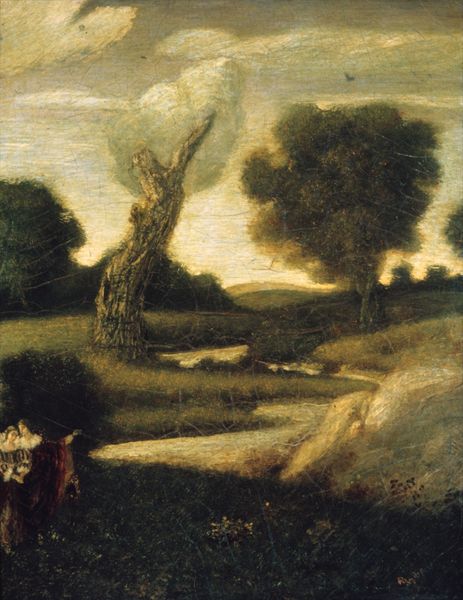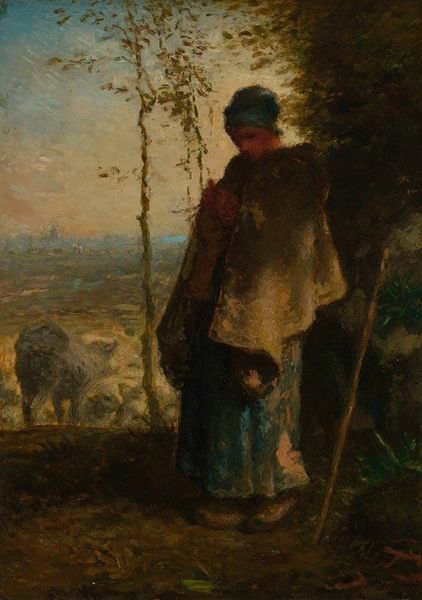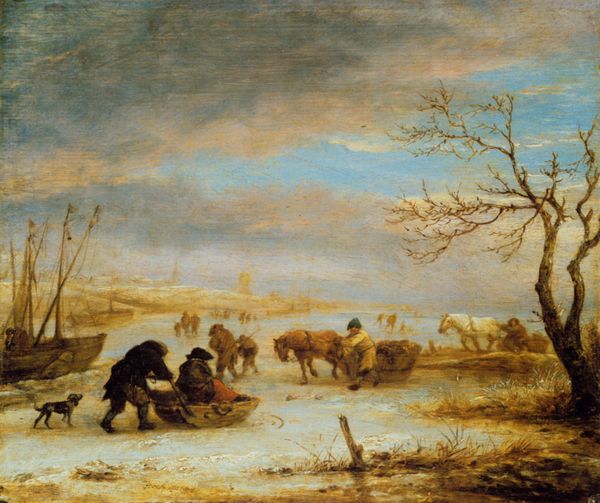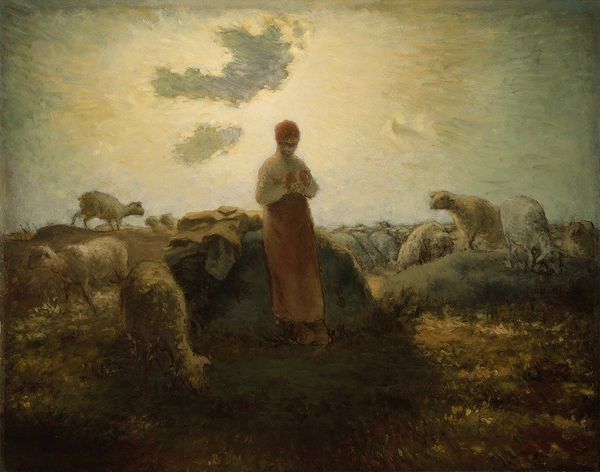
painting, plein-air, watercolor
#
portrait
#
sky
#
still-life-photography
#
animal
#
painting
#
impressionism
#
plein-air
#
landscape
#
figuration
#
oil painting
#
watercolor
#
romanticism
#
genre-painting
#
watercolor
#
realism
Dimensions: 24 x 31 cm
Copyright: Public domain
Curator: Jean-François Millet’s "A Shepherdess and Her Flock," currently residing at the Musée d'Orsay, depicts a lone figure against a wide landscape. What strikes you immediately? Editor: There’s a certain stillness. A quiet monumentality. The composition, despite the plein-air aesthetic, has a distinctly posed quality. I see triangles everywhere -- the figure herself, the rise of the hill, and even suggested in the flock in the background. Curator: Indeed. Millet frequently imbued rural scenes with a sense of dignity and timelessness. The shepherdess is holding tools for spinning wool, indicating her work. But it’s more than just work, isn't it? Editor: Absolutely. The yarn is interesting as an indication of transformation. Raw material manipulated into thread... a metaphor, perhaps? This links back to archetypal myths where spinning, weaving and human fate are closely tied. Consider the Moirai of Greek tradition. Curator: Precisely! She stands as an emblem of rustic virtue and enduring strength in harmony with nature. There's a quiet spiritual connection with her surroundings. Editor: And the color palette – a very muted ochre, sage and browns -- contributes to the sense of timelessness. Although considered realism and touched with impressionism, Millet is subduing color, almost draining the light of brilliance. See how he allows the form to take precedent? It’s a kind of humble observation without visual extravagance. Curator: It invites contemplation on the simplicity and interconnectedness of life, don't you think? She becomes more than a shepherdess; she's a vessel containing layers of symbolism that speak to broader existential concerns. The flock, though seemingly indistinct in the distance, represents community and shared purpose. Editor: Yes, she and they operate almost as visual building blocks within the overall scheme. While plein-air painters tended to fixate on transient optical phenomena, the work remains surprisingly solid in its overall construction. I notice, too, the interesting tension between the close foreground and recessive background—a dialectic played out using carefully-judged tonal shifts. Curator: A humble woman connects us to profound and enduring truths about human existence, if we’re open to seeing the layers within its composition. Editor: Well put. It demonstrates that simple subject matter need not lack sophistication when considered within a specific cultural-historical framework.
Comments
No comments
Be the first to comment and join the conversation on the ultimate creative platform.
